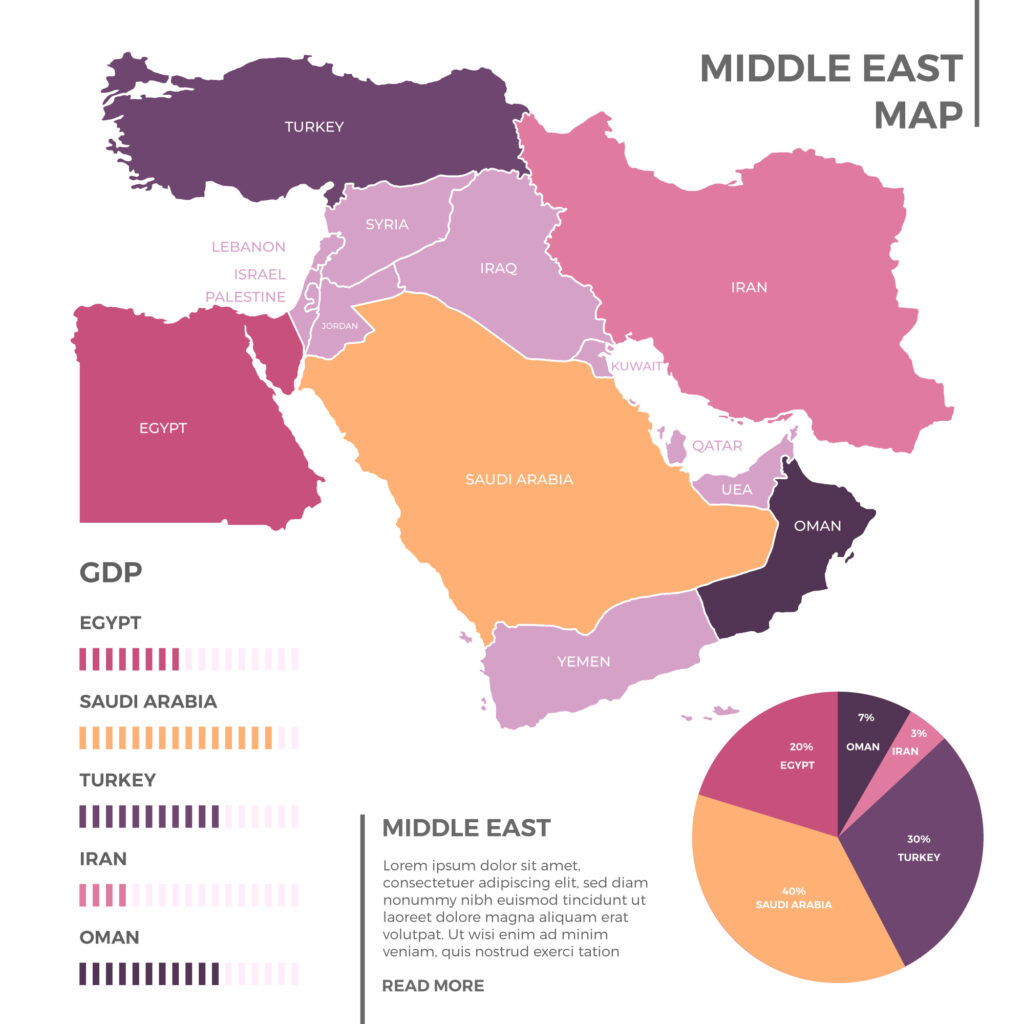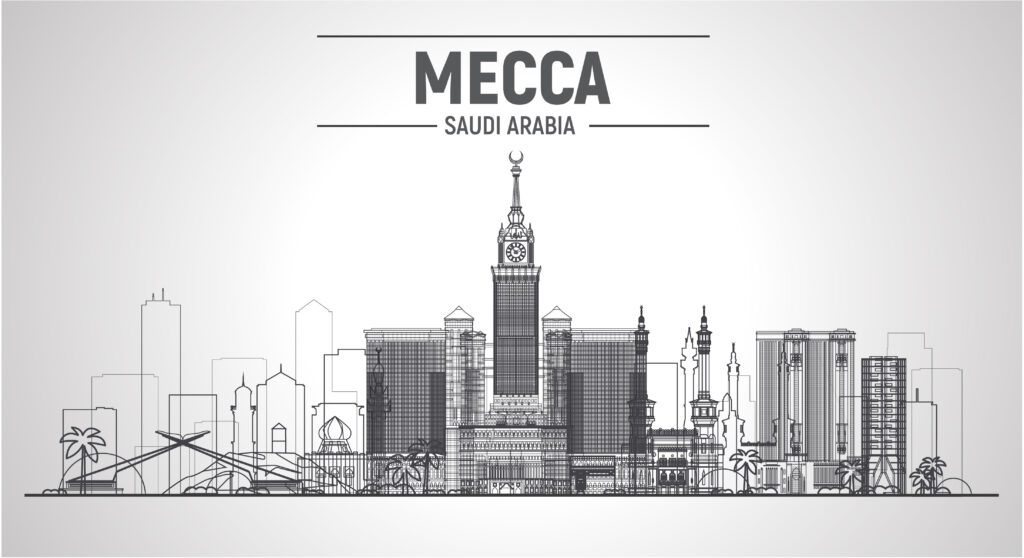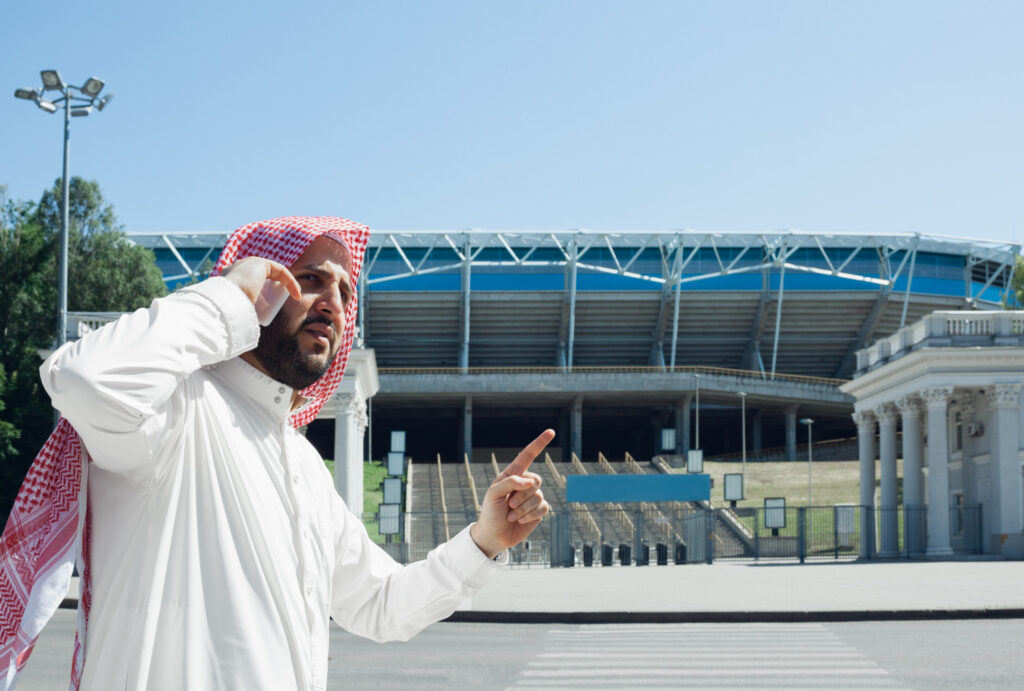Al Masjid Al Nabawi was built in the first year of the Hijra, and the history of Al Masjid Al Nabawi is lovely and surprising; So it has received a lot of attention over time.
History of Al Masjid Al Nabawi (The Prophet’s Mosque)
The Prophet (pbuh) established Al Masjid Al Nabawi in Rabi’ al-Awwal in the first year of his Hijrah,
and it was approximately 35 meters in length and 30 in width.
The Prophet (pbuh) made its foundation of stones and the house of mud, which is the brick that was not burned with fire, and the Prophet (pbuh) was built with their brick and stones.
Moreover, the Prophet (pbuh) made three doors for it, and its roof of leaves.
When the mosque was crowded and the number of Muslims increased, the Prophet (pbuh) expanded it, this happened in the seventh year of the Hijrah, after his return from Khaybar.
History of Al Masjid Al Nabawi | Mosque Expansion
As a result of Al Masjid Al Nabawi’s status in the Islamic religion, and the greatness of its status among Muslims, a lot of attention has been paid to it in the Islamic eras until our time.
As it has been expanded several times, restored, and rebuilt, for example:
Expansion During the Era of the Companions
During the era of the Prophet’s Companions, Al Masjid Al Nabawi was expanded more than once, as follows:
Firstly, During the reign of Caliph Omar bin Al-Khattab
In the 17th Hijri, some cracks and necrosis appeared in some of the mosque’s columns.
Therefore, Caliph Umar ibn al-Khattab repaired and expanded the mosque until the following happened:
- The extension extended five meters to the south, ten meters to the west, and fifteen meters to the north. It did not increase in the eastern side because of the rooms of the wives of the Prophet (pbuh).
- The mosque has 6 doors and 6 corridors.
- An inner courtyard was built for the mosque, covered with sand and gravel from Wadi Al-Aqiq.
- With an outside courtyard located north of the mosque, it was prepared for sitting for those who wanted to talk about worldly matters and sing poetry.
Secondly, During the Reign of Caliph Othman Bin Affan
With the passing of the years, the number of Muslims increased, Al Masjid Al Nabawi became crowded with worshipers, and its pillars worsened.
As a result, Caliph Othman in the year 29 AH ordered an increase in the area of the mosque and its reconstruction until the mosque became:
- Expanding its area from the northern, western, and southern sides.
- Renovation of the building with engraved (carved) stones and plaster.
- The building columns were made of stones, and pieces of iron and lead were placed inside them to strengthen them.
- The roof building is made of strong, precious teak wood carried on columns.
Expansion in the Umayyad Era
The fourth expansion during the reign of the Umayyad caliph Al-Walid bin Abdul-Malik in the year 88 AH;
Where the area of the mosque was increased and reconstructed, and the expansion continued until the year 91 AH.
In the Umayyad era, after reconstruction and expansion, many changes took place in the Prophet’s Mosque, for example:
- Adding the four minarets on the corners of the mosque.
- Constructing the hollow mihrab.
- The mosque’s interior walls are decorated with marble, gold, and mosaics.
- Gilding of the ceiling, the heads of the cylinders, and the door sills with gold.
- Expanding the mosque from all sides, and placing a five-sided barrier.
Expansion During the Abbasid Era
The fifth expansion was during the reign of the Abbasid Caliph al-Mahdi; Where he visited the Prophet’s Mosque in the year 160 AH, and he saw the need for its expansion and reconstruction, and he ordered that.
The expansion focused on the increase in the northern side of the mosque, and construction continued until the year 165 AH when the area of the mosque was increased and the walls were raised.
In addition, he placed windows in the mosque to improve lighting and increase ventilation.
Ottoman Era
The Ottoman sultans took care of the Prophet’s Mosque, and they carried out some repairs and restorations on it, and the mosque remained as it was until the year 1265 AH;
The Ottoman Sultan Abdul Majid Khan ordered the restoration of the mosque when cracks appeared on its walls, and construction and decoration work continued until the year 1277 AH.
Examples of the changes that have occurred are:
- The area of the mosque expanded, and the height of the walls was increased.
- The number of corridors has become 19.
- The number of columns has become 327 columns
- Domes became 170 domes.
- It was built on the far northern side of the mosque as a scribe for teaching Qur’an.
- The mosque was illuminated by 600 oil lamps distributed throughout the mosque.
The History of Al Masjid Al Nabawi | Al Masjid Al Nabawi Fire
The Prophet’s Mosque burned twice, as follows:
Firstly, During the Abbasid Era
The mosque was exposed to fire in the year 654 AH, during the reign of
the Abbasid caliph Al-Mustasim, and when the caliph learned of this, he initiated the year 655 AH to repair and rebuild the mosque,
and he sent the necessary funds for that, but the construction did not take place because of the Tatar invasion,
and the fall of Baghdad in the year 656 AH, So the matter was taken over after that by the Mamluk sultans in Egypt in the year 661 AH, and the mosque returned to what it was before the fire.
Secondly, During the Mamluk Era
As for the second fire, it occurred in Al Masjid Al Nabawi in 886 AH, so the letter was sent to Sultan Al-Ashraf Qaitbay,
and he was deeply grieved, and sent money, craftsmen, and the necessary materials,
The mosque was rebuilt and expanded, and the following was done:
- Most of the doors of the Abbasid expansion were closed, leaving only 4 doors for the mosque.
- A minaret was added to the mosque so that the number of minarets became five.
- Creation of balconies, windows, and cornices in the upper parts of the walls for ventilation and lighting.
In Conclusion, the History of Al Masjid Al Nabawi is full of renewal and reconstruction,
And if this indicates something, then it indicates its importance to Muslims, and their interest in it at different times.





